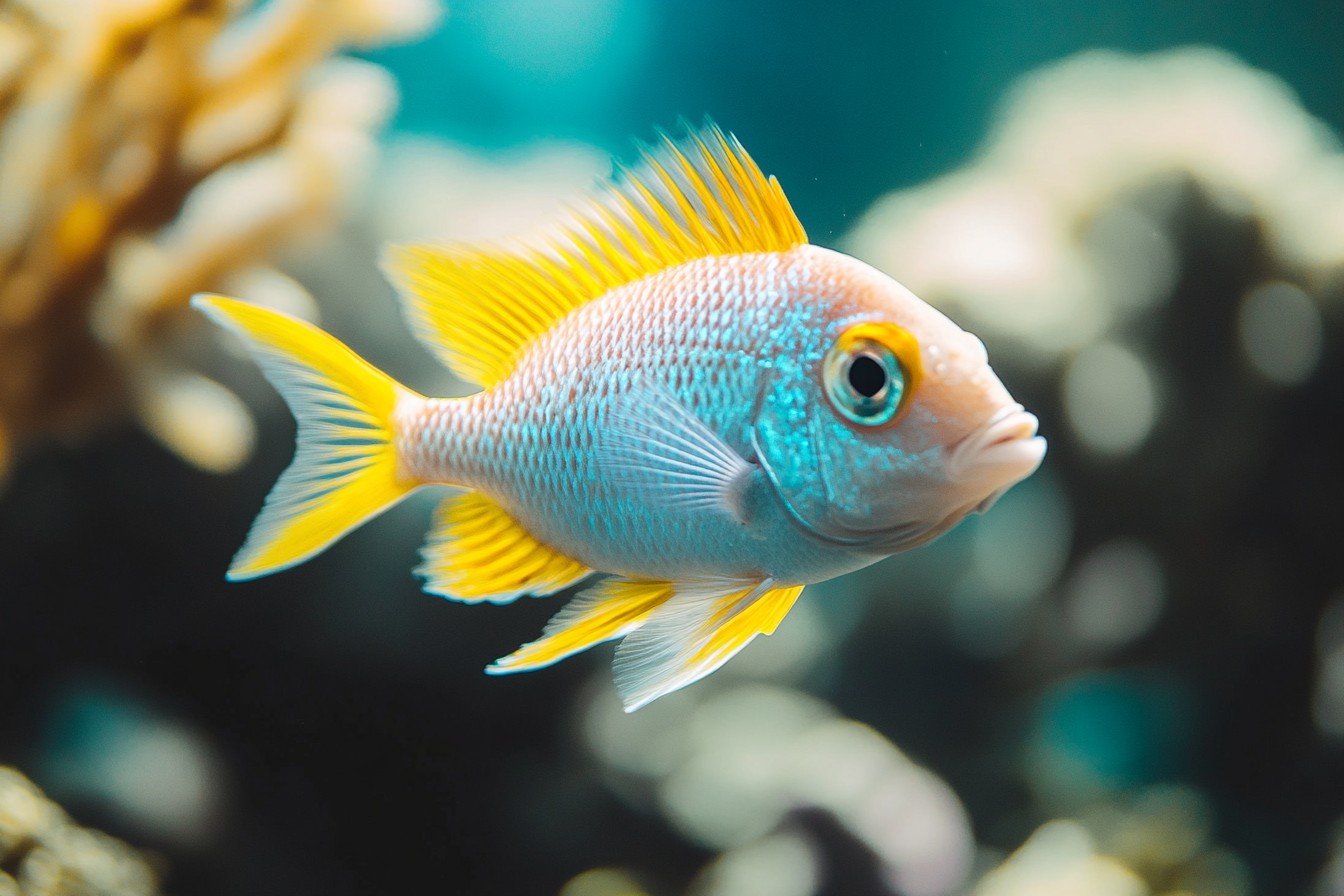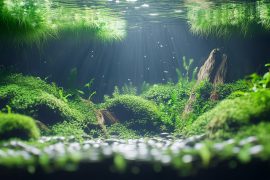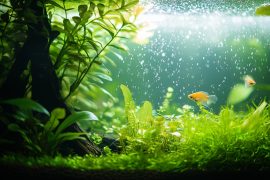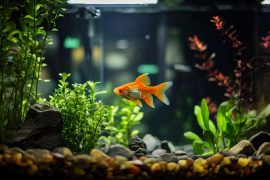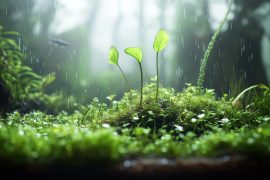I once made a betta so angry that it refused to come out from behind a piece of driftwood for three days. This wasn’t some strange fish protest against water conditions or tank mates—it was entirely about my aquascape choices. I’d created what I thought was a sleek, minimalist design with sharp stones, open swimming areas, and carefully placed plants.
My betta took one look at this arrangement, flared his gills in what I can only interpret as fish for “absolutely not,” and proceeded to wedge himself into the only densely planted corner of the tank. After watching him squeeze behind plants rather than swim in the open areas I’d so thoughtfully provided, I finally got the message: what looks beautiful to us isn’t always functional for the creatures that have to live there. That sulking betta taught me one of the most important lessons in my aquascaping career—understanding the specific needs, natural behaviors, and preferences of your livestock is just as important as mastering hardscape techniques or plant cultivation.
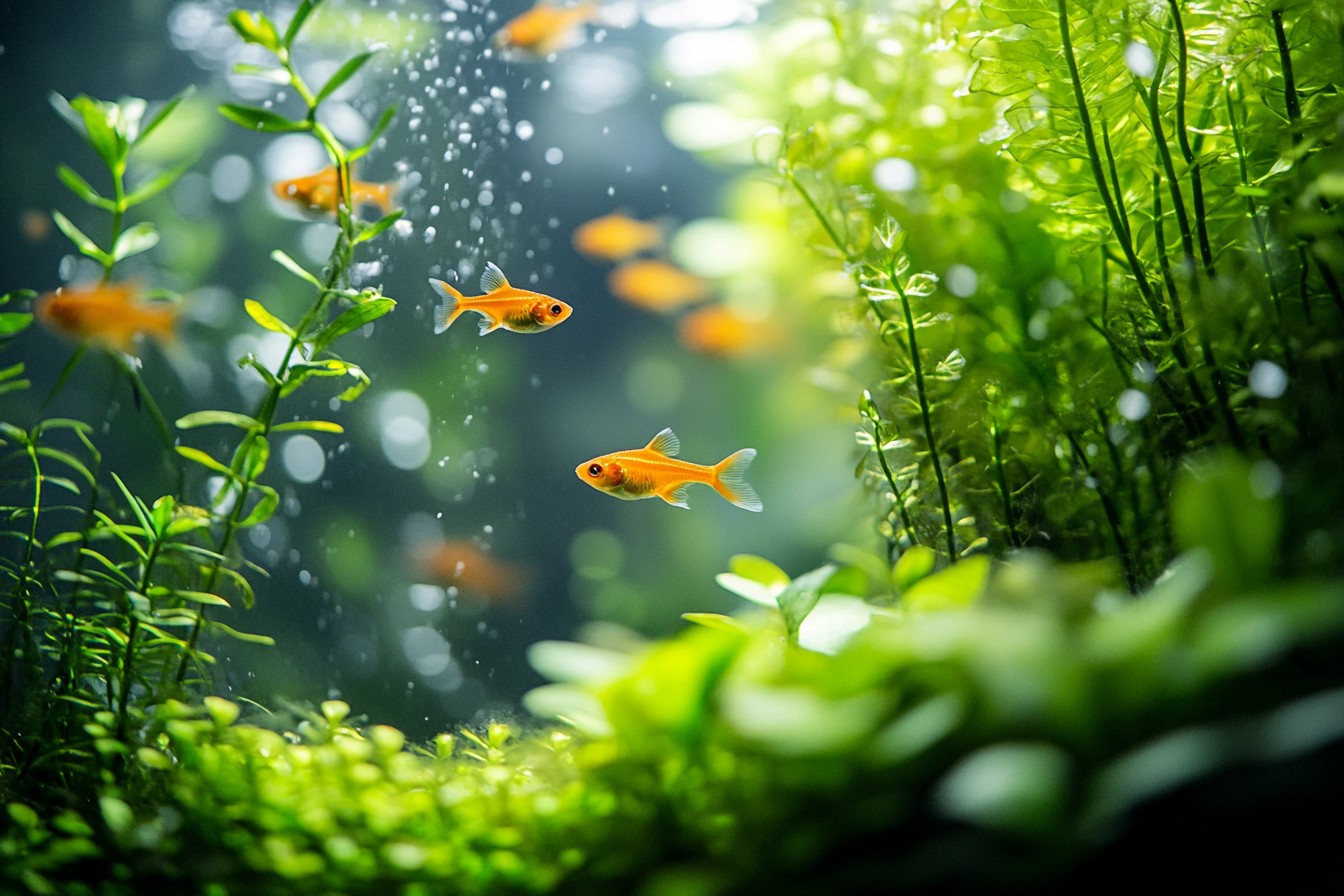
Over the years, I’ve designed tanks for dozens of different species, from the usual community fish to specialized biotopes for rare and demanding creatures. Each project has been a learning experience in how different fish and invertebrates interact with their environments. Sometimes these lessons came easily—other times they involved complete rescapes after discovering that my beautiful design was essentially a stress chamber for its inhabitants.
Let’s start with bettas, since they’re often the first fish many people keep and frequently the most misunderstood. These fish evolved in shallow, densely vegetated waters with minimal current. Despite what those sad little cups in pet stores might suggest, bettas need space to thrive—ideally 5+ gallons with plenty of hiding spots, resting areas near the surface, and gentle filtration.
The perfect betta aquascape includes dense plantings of soft-leaved species like ferns, mosses, and floating plants, along with numerous caves and crevices. I’ve had the most success with arrangements that create a maze-like environment with distinct territories and resting spots at various heights. After my sulking betta incident, I redesigned his tank with a heavy emphasis on tall plants reaching to the surface, broad-leaved species where he could rest, and multiple hiding spots.
The transformation in his behavior was immediate—from hiding and stress-flaring to curious exploration. One mistake I regularly see in betta tanks is hardscape with sharp edges. Bettas have delicate fins that tear easily on rough surfaces.
I once used dragon stone in a betta tank, thinking the numerous holes would make perfect hiding spots. Two weeks later, I noticed shredded fins and had to replace all the hardscape with smoother alternatives. Now I run my hand over every surface that will go into a betta tank—if it feels rough to my fingers, it doesn’t go in.
When it comes to schools of small tetras, rasboras, and similar mid-water swimmers, the aquascaping approach shifts dramatically. These fish want space to move as a group, lines of sight to maintain school cohesion, but also areas of cover where they can retreat when feeling threatened. I aim for what I call the “corridor design”—open swimming lanes punctuated by plant groupings and hardscape that create natural barriers and visual breaks.
One of my favorite tetra tanks featured tall stands of vallisneria creating distinct “hallways” through the aquascape, with shorter plants and driftwood pieces arranged to provide shelter without obstructing the main swimming paths. I’ll never forget watching a school of ember tetras racing through these corridors during water changes, their orange bodies flashing like tiny comets against the green background. Getting this balance right—open enough for natural schooling behavior but with enough cover to make them feel secure—transforms nervous, tight-schooling fish into confident explorers that display their natural behaviors.
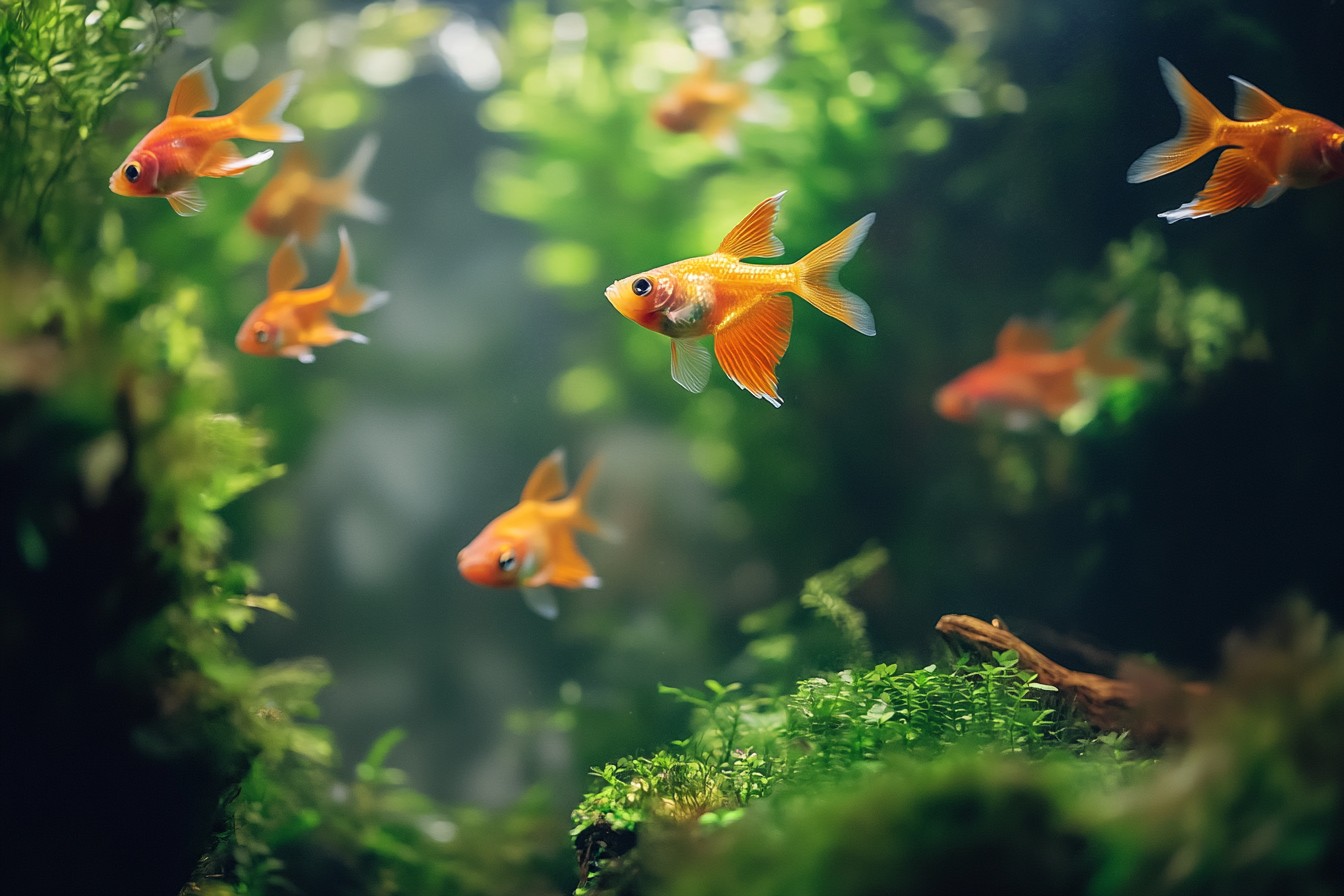
Bottom-dwelling species present different challenges entirely. Corydoras catfish, kuhli loaches, and similar substrate sifters need areas of open, soft substrate where they can engage in their natural foraging behaviors. I learned this lesson the hard way after setting up what I thought was a perfect hardscape-heavy tank with just small patches of sand for a group of panda corys.
They spent all day trying to sift through tiny sand patches, showing obvious stress and never really thriving. When I redesigned the tank with at least 50% of the footprint as open sand, their behavior completely changed—they began their characteristic darting, sifting, and social interactions. For bottom-dwellers, I now ensure there are generous open substrate areas while still providing overhead cover from plants or hardscape.
The ideal arrangement allows them to feel protected from above while having plenty of space to forage. Smooth river rocks, pieces of driftwood creating overhangs, and plants with broad leaves all create the sense of security these fish need without restricting their access to the substrate. The substrate choice itself matters enormously for bottom-dwellers.
I once made the rookie mistake of using stratum soil (a popular aquasoil) in a tank for corydoras. The sharp particles damaged their sensitive barbels within weeks. Now I either use sand exclusively for bottom-dweller tanks or create designated sand “beaches” in mixed-substrate setups.
Cichlids present some of the most specific aquascaping requirements, varying dramatically between species. African cichlids from Lake Malawi and Lake Tanganyika typically want rocky environments with numerous caves, territories, and sight breaks. When designing for these fish, I focus on creating stable rock structures with multiple entrances and exits, arranged to break up lines of sight between territorial males.
My most successful African cichlid setup used egg crates (light diffuser panels) as a base for stacking rocks, creating a three-dimensional labyrinth of caves and passageways. The fish immediately claimed territories, with dominant males taking the choicest caves and defending small territories around them. The key was providing more potential territories than fish to reduce aggression and ensuring multiple escape routes so that harassed fish could quickly break line of sight from aggressors.
South American cichlids like angels and discus have entirely different needs. These fish typically come from softer, more acidic waters with lots of driftwood, leaf litter, and plants. When aquascaping for discus, I focus on vertical structures that don’t take up too much floor space—tall driftwood pieces, broad-leaved plants, and open swimming areas.
Discus are notoriously shy and easily stressed, so I always include “safe zones” where they can retreat while maintaining a generally open design that allows for ease of cleaning (essential for these messy eaters). One of my proudest aquascaping achievements was a 90-gallon discus tank that balanced the fish’s need for pristine water conditions with their preference for natural surroundings. I used large, vertically oriented driftwood pieces planted with anubias and java ferns, broad-leaved amazon swords as background plants, and open sand in the foreground.
The discus colored up beautifully and even began breeding—the ultimate sign of fish that feel secure in their environment. Shrimp tanks require yet another approach entirely. These tiny creatures spend their lives grazing on biofilm, searching for food in nooks and crannies, and hiding from potential predators.
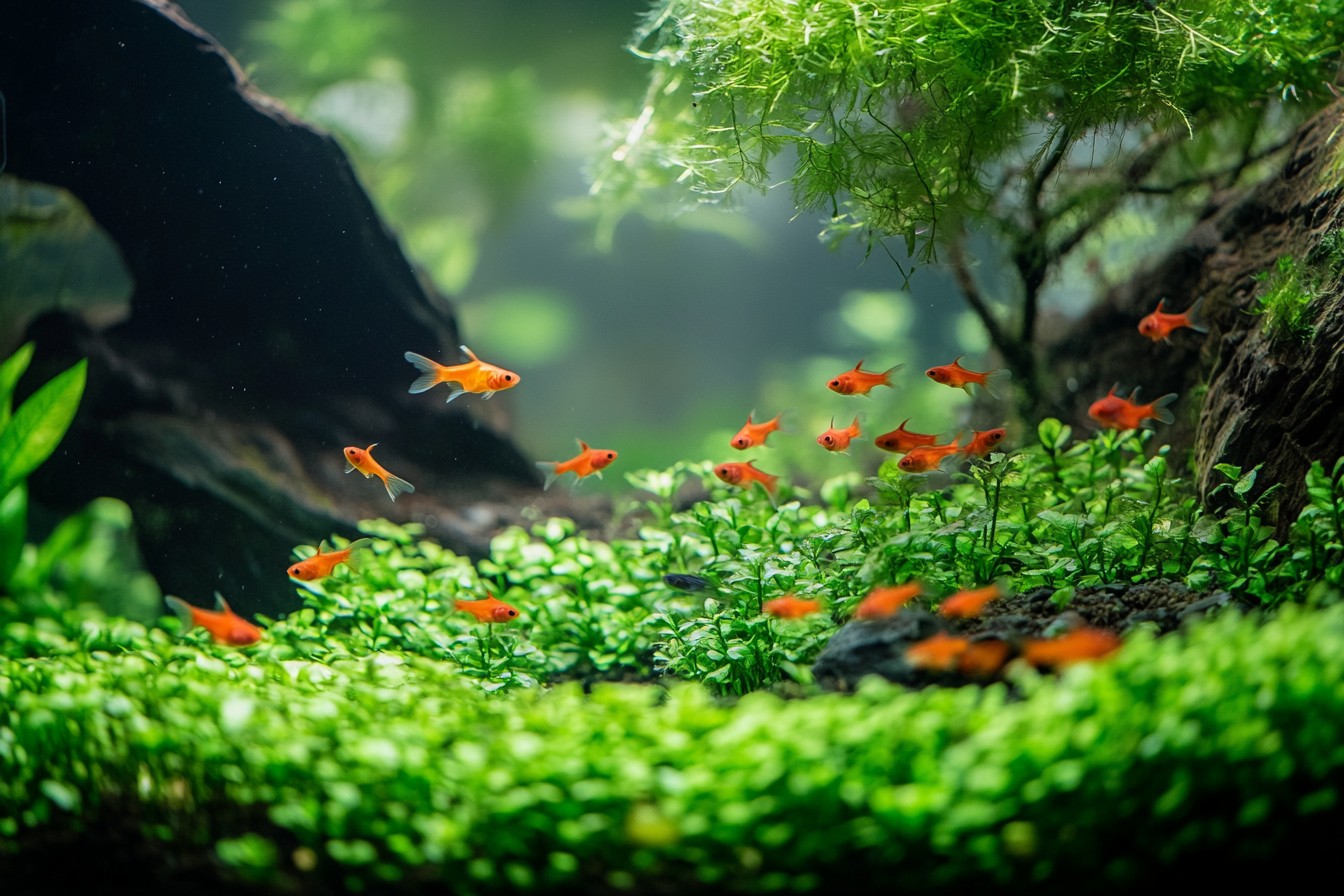
For dedicated shrimp tanks, I focus on maximizing surface area and hiding spots while ensuring good water flow and visibility (for us, not the shrimp—they couldn’t care less about being display animals). Moss is the miracle material for shrimp tanks. Java moss, Christmas moss, flame moss—they all provide essential grazing surfaces and hiding places, especially for shrimplets.
I typically attach mosses to hardscape like driftwood and rocks, creating what I call “moss mountains” that provide vertical territory without taking up much floor space. My desktop shrimp tank uses this approach, with various moss species growing on a complex driftwood arrangement, creating countless grazing surfaces and hiding spots. The adult shrimp spend all day picking through the moss for microorganisms, while newly hatched shrimplets remain safely hidden until they’re large enough to venture out.
Watching a thriving shrimp colony in a well-designed tank is like observing a miniature ecosystem—each tiny animal finding its niche within the aquascape. For larger invertebrates like crayfish and crabs, I focus on creating structurally stable hardscapes that won’t collapse when burrowed under or climbed upon. These creatures are notorious redecorators and will rearrange anything they can move.
My first crayfish tank was a lesson in humility—I spent hours creating a beautiful arrangement of plants and small rocks, only to wake up the next morning to find half of it dismantled and rearranged according to the crayfish’s preferences. Now I use larger, heavier hardscape materials anchored to the tank bottom with aquascaping supports for these busy-clawed creatures. I accept that plants are likely to be trimmed, moved, or entirely uprooted according to the invertebrate’s whims.
There’s a certain charm in creating a playground for these intelligent animals rather than a static display—watching them interact with and modify their environment is part of the enjoyment. For community tanks housing a variety of species, the challenge becomes creating distinct zones that cater to different needs within the same system. I typically design these tanks with a bottom layer of fine sand for substrate sifters, mid-level hardscape with attached plants for mid-water species, and floating or tall plants for surface-dwelling fish.
One of my favorite community tanks was designed with three distinct “regions”—a sandy foreground with scattered smooth stones for corydoras, a central area with driftwood and anubias for tetras and gouramis, and a heavily planted background section with tall stems and floaters for surface-dwelling hatchetfish. Each group of fish naturally gravitated toward their preferred zone, creating a harmonious multi-species display where every creature could express its natural behaviors. Breeding setups require even more specialized aquascaping approaches.
When designing tanks for fish to breed in, I research their specific spawning behaviors and create environments that facilitate these natural processes. For example, cave-spawning fish need appropriate caves of the right size and orientation; egg-scatterers need fine-leaved plants or spawning mops to catch eggs; bubble-nest builders need calm water surfaces and floating plants to anchor their nests. I once worked with a client who wanted to breed Bolivian rams but was having no success despite excellent water parameters.
After observing the fish, I noticed they were attempting to clean flat stones as spawning sites but were constantly disturbed by other tank inhabitants. We redesigned the tank with several flat stones placed in quiet corners, partially obscured by plants to create private territories. Within three weeks, the first pair spawned successfully.
The most challenging fish I’ve ever aquascaped for were actually puffers—specifically figure-8 puffers, which are brackish water specialists with very specific needs. They require open swimming space but also plenty of hiding places, smooth surfaces that won’t damage their sensitive skin, and complex environments that provide mental stimulation for these highly intelligent fish. The solution ended up being a minimalist hardscape of smooth river stones and mangrove roots, arranged to create numerous sight breaks and hidey-holes, with hardy brackish plants like java fern and anubias.
The substrate was fine sand—essential for these fish who like to sift and bury things. The puffers spent hours investigating every aspect of their environment, moving small objects around, and generally behaving normally.
